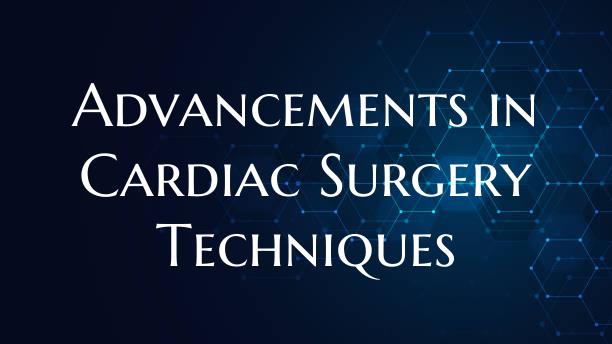
Advancements in Cardiac Surgery Techniques
Introduction: Cardiac surgery has witnessed remarkable advancements in recent years, with innovative techniques revolutionizing the treatment of various heart conditions. These advancements have not only improved surgical outcomes but also led to minimally invasive procedures, reduced recovery times, and enhanced patient safety.
Evolution of Cardiac Surgery Techniques: Historically, cardiac surgery involved open-heart procedures that carried inherent risks and longer recovery periods. However, with the development of new technologies and techniques, such as robotic surgery, transcatheter procedures, and advanced imaging technologies, surgeons can now perform intricate cardiac surgeries with greater precision and minimal invasiveness.
Robotic-assisted cardiac surgery: Robotic-assisted surgery has emerged as a game-changer in the field of cardiac surgery. Using robotic systems, surgeons can perform complex procedures with enhanced dexterity and control, leading to improved outcomes for patients. Robotic-assisted surgery allows for smaller incisions, reduced blood loss, and shorter hospital stays, making it a preferred option for many cardiac procedures.
Transcatheter techniques: Transcatheter procedures have transformed the treatment of various heart conditions, including valve repair and replacement. By accessing the heart through blood vessels, rather than traditional open-heart surgery, transcatheter techniques offer a less invasive approach with faster recovery times. These procedures are particularly beneficial for high-risk patients who may not be suitable candidates for traditional surgery.
Advanced imaging technologies: The integration of advanced imaging technologies, such as 3D imaging, intraoperative echocardiography, and virtual reality, has significantly enhanced the precision and accuracy of cardiac surgeries. These technologies enable surgeons to visualize the heart in real-time, plan procedures more effectively, and navigate complex anatomical structures with greater confidence.
Future Directions: As technology continues to advance, the future of cardiac surgery is likely to see further innovations and refinements in surgical techniques. Personalized medicine, artificial intelligence, and bioengineering are areas that hold promise for improving patient outcomes and expanding the capabilities of cardiac surgeons. By embracing these advancements, the field of cardiac surgery is poised to enter a new era of precision, efficiency, and patient-centered care.
Conclusion: Advancements in cardiac surgery techniques have transformed the landscape of cardiovascular care, offering patients new hope and improved treatment options. From robotic-assisted surgery to transcatheter techniques and advanced imaging technologies, the evolution of cardiac surgery has paved the way for safer, more effective procedures with better outcomes. With ongoing research and innovation, the future of cardiac surgery looks promising, promising a brighter outlook for patients with heart conditions.